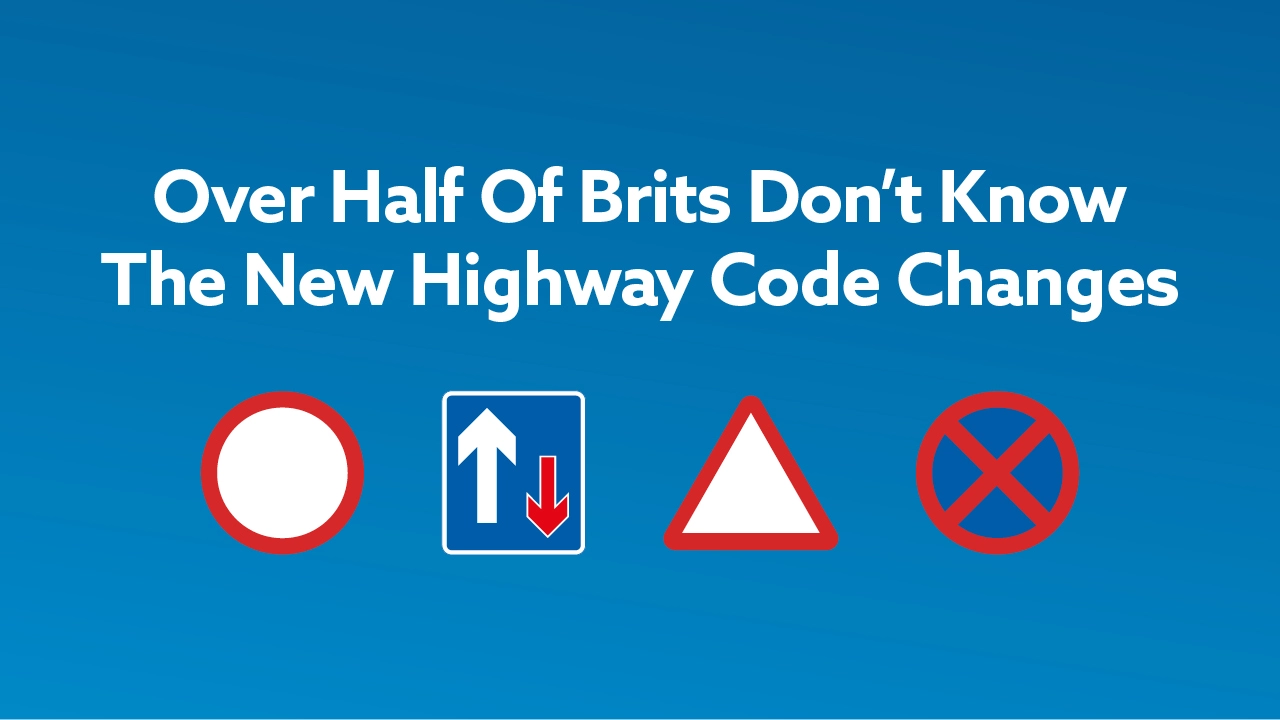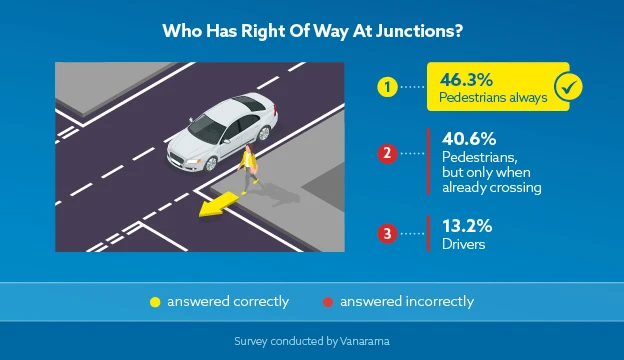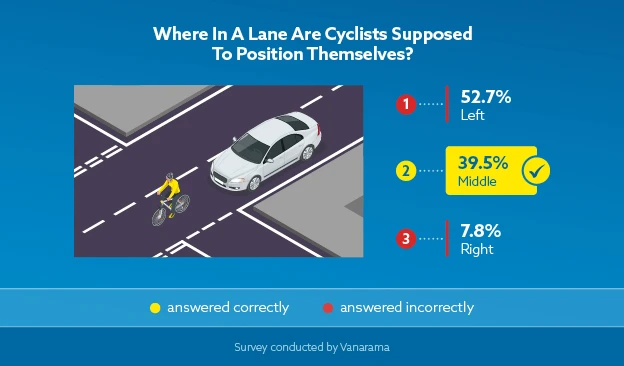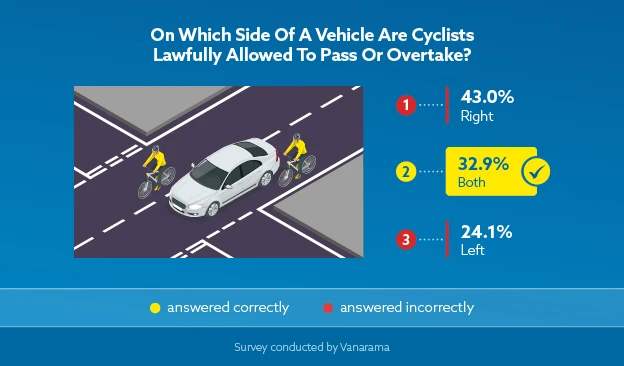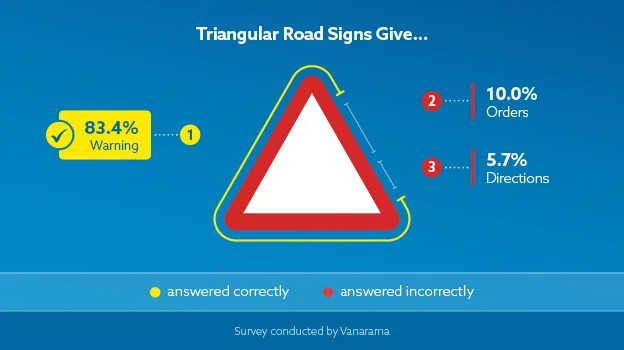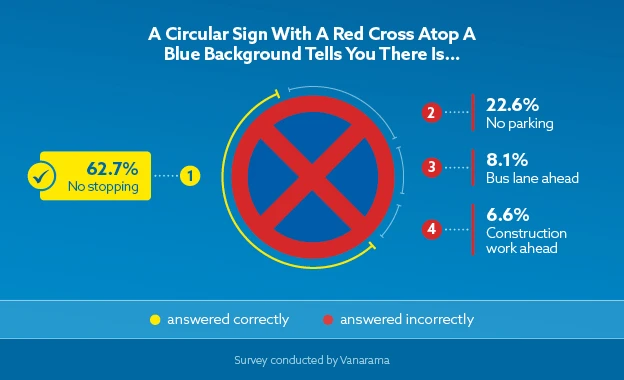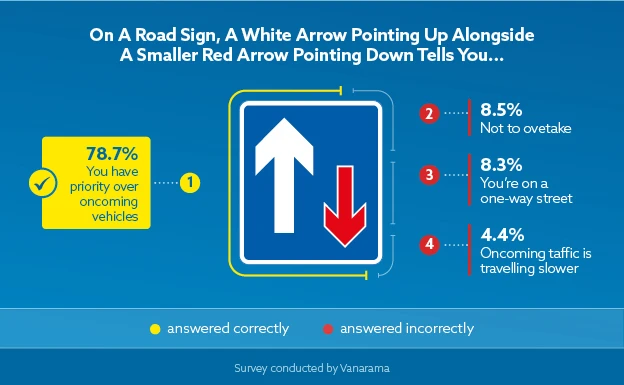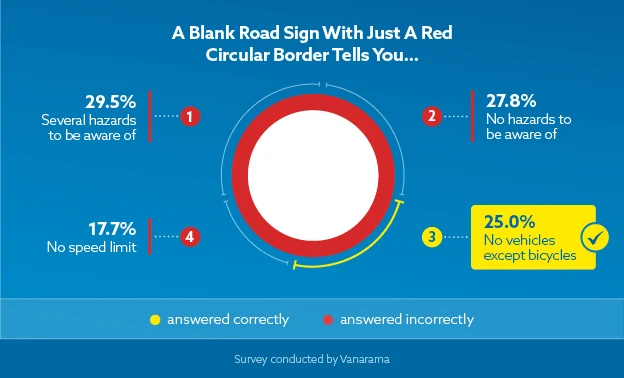Earlier this year, The Highway Code was revised to become more pedestrian-friendly and less motor-centric. While it’s important to keep up to date with rule changes, according to research by Vanarama, many are unaware of what the latest revisions entail.
What’s even more concerning is that there are also existing road rules and signs that British motorists aren’t sure about.
Vanarama carried out a survey of 2,000 Brits to find out what the British public know about new changes as well as the existing rules of the road.
Less Than Half Of The British Public Are Aware That Pedestrians Now Have Right Of Way At Junctions
As of 29th January, pedestrians have priority over vehicles and cyclists when crossing road junctions, meaning when cars or bikes are turning into or out of a junction, they must stop for people on foot – even if they haven’t began crossing. The rule changes may seem trivial, but as there’s a considerable safety risk to pedestrians and liability rests on those behind the wheel, you run the risk of careless or dangerous driving – with unlimited fines, 11 penalty points and even two years’ imprisonment.
** Only 46% of drivers, according to our research, correctly recognise pedestrians as having right of way** at junctions. What’s more, two in every five UK drivers believe pedestrians only have priority when already crossing – making for a significant risk when crossing the road.
This is an alarmingly high percentage of people that are unaware of the new hierarchy for road users, which was introduced as part of the UK Government’s plan to boost cycling and walking.
The Highway Code’s updated hierarchy of road users, which places priority on those most at risk, is outlined below:
-
Pedestrians
-
Cyclists
-
Horse Riders
-
Motorcyclists
-
Cars/taxis
-
Vans/minibuses
-
Large passenger vehicles or courier vehicles like buses and HGVs
Drivers of cars have a duty to be responsible and consider those such as pedestrians and cyclists.
H2: 61% Of Brits Don’t Know Where Cyclists Are Meant To Position Themselves On The Road
Another new rule we saw introduced is that cyclists are now supposed to position themselves in the middle of the lane. In all, 61% of UK drivers aren’t aware that cyclists are supposed to position themselves in the middle of a lane.
This is perhaps down to previous versions of The Highway Code not specifying road positioning, which has caused friction between cyclists and drivers who have different assumptions of what the rules are.
Cyclists can also ride two abreast rather than riding in single file, which is fundamental to enjoying the sport and social aspect of cycling, but they’re also encouraged to be aware of other road users and drop into single file where possible, to allow the safe passage of vehicles.
When safe to do so, however, riding two abreast also provides protection for children or those who are less confident and gives other road users greater visibility of cycling groups. Drivers must make sure they provide enough room for the cyclist when overtaking.
The risk of punishment is felt on both sides of the argument, however, as cyclists unaware of this rule face a careless cycling charge and £1,000 in fines.
The Majority Of Road Users Are Unaware Cyclists Can Now Lawfully Pass Them On Both Sides
Almost three in five (57%) of Brits are unaware that cyclists are now permitted to pass or overtake vehicles on both the left- and right-hand side. The new rule, paired with our shocking results on public knowledge, marks a severe risk for cyclists especially.
To ensure the safety of themselves and other road users, drivers should now be aware of cyclists approaching them on both sides – when stationary or in moving traffic. Mirrors and blindspots should be routinely checked.
Not being aware of cyclists passing on your left could fall under careless and inconsiderate driving, or even dangerous driving in extreme circumstances. Such a ruling could result in unlimited fines, up to 11 points and even two years’ imprisonment.
One In Six Brits Don’t Know That Triangle Road Signs Give Warnings
It can be tough task keeping up to date with the many UK road signs and their meanings, but one simple characteristic can simplify it somewhat – the shape of a sign. Triangular, circular and rectangular road signs each provide their own form of guidance.
However, our results show that many motorists and road users aren’t even aware of the relevance of a sign’s shape. One in six (16%) are unaware that triangular signs, for example, provide warnings on hazards like sharp bends or steep inclines ahead.
Circular signs give orders, such as speed limits. Red borders give instructions on what you are prohibited from doing, like speed limits which cannot be broken within the law, while blue-bordered circular signs tell you what you can do, such as turning left or right ahead. Rectangular signs give information, for example bus lanes and congestion charge zones.
Nearly Two In Five Drivers Don’t Know What A No-Stopping Sign Means
According to the survey, 37% don’t know what a no-stopping sign is in the UK, which informs drivers they cannot stop their vehicle in that area. This sign is to prevent stopping on a road which can cause danger or be an inconvenience to traffic.
Perhaps more alarming is that many will misinterpret these rules – 23% wrongly mistook the sign as a no-parking sign, 8% believed it meant a bus lane was ahead, and 7% thought it warned of construction works.
More Than A Fifth Of Drivers Don’t Know When They Have Priority
On narrow sections of road, for example single-lane chicanes that are used to slow traffic, drivers will often find signs that outline which side of traffic has priority.
While 79% of Brits understand these signs, 9% thought it meant no overtaking, 8% thought it indicated a one-way street, and 4% thought it meant oncoming traffic is travelling slower. In all, more than a fifth (21%) of Brits weren’t clear on this rule.
A white arrow pointing up to the left of a smaller red arrow pointing down indicates that you have priority and oncoming traffic should give way, while the reverse (a right-sided white arrow pointing down) tells you that the oncoming traffic has right of way.
Three Quarters Of Brits Don’t Know What A ‘No Vehicles Except Bicycles’ Sign Means
Only 25% of Brits know what a blank road sign with just a red circular border means – that no vehicles except bicycles are permitted. This is a significant number for something quite important, as cyclists and pedestrians may not be expecting or looking out for vehicles.
A baffling 30% believe this sign indicates there are several hazards to be aware of ahead – ironic, considering that driving down such a route would make you the hazard for pedestrians and cyclists.
It’s important as a road user to be aware of which routes you can travel on, as failure to understand the guidance can be dangerous to you and others around you. Likely falling under the ‘Careless and inconsiderate driving’ penalty, failure to follow the rules could result in a fine without limit and up to nine licence points. There’s even the chance of a discretionary disqualification.
And this doesn’t just apply to drivers; cyclists face fines of up to £2,500 for not adhering to The Highway Code. That limit is reserved for dangerous cycling, but cyclists can also be fined £1,000 for careless cycling or £500 for simply cycling on the pavement.
Top Tips For Improving Your Knowledge Of The Most Confusing Road Signs And Rules
- Learn the difference between the road sign shapes
UK road signs feature three basic shapes, with each of them serving a different purpose:
● Circular signs – these give orders which you must follow by law. If it has a red border, it’s telling you what not to do. If it has a blue border, this is an instruction. For example, only turn left or right ahead.
● Triangular signs – these give warnings and tend to have red borders. Common triangular signs alert drivers of a bend, roundabout or traffic lights ahead.
● Rectangular signs – these give information. For example, bus lanes, charging zones or lane restrictions. The colour blue is used on motorways, green on primary roads, and white on minor roads.
- Know the difference between the ‘no stopping’ sign and the ‘no waiting’ sign
Our research found that 37% of Brits don’t know what a no-stopping sign is. As you could break the law by accidentally parking near this sign, it’s important to know what it looks like. It’s a red cross over a blue background, whereas the ‘no waiting’ sign features a single red diagonal stripe over a blue background.
- Keep up to date with The Highway Code
As our survey results have shown, it’s important to keep up to date with The Highway Code or you could be breaking the law without realising. New road signs or road rules are introduced yearly, so drivers that passed their driving test a few years back (or even cyclists) need to keep up to date to prevent an accident.
- Look up signs you aren’t sure of
If you’ve driven past a sign that you aren’t 100% certain of, once you’ve pulled up safely, look up The Highway Code to see what it was telling you. Their comprehensive guide to road and traffic signs is a good start.
Methodology
Vanarama surveyed 2,000 UK respondents on the January 2022 changes to The Highway Code, as well as existing road rules and signs.
Bookmark the Vanarama blog for more in the way of automotive news and insight, or browse our latest car leasing deals if you’re in the market for an upgrade.

